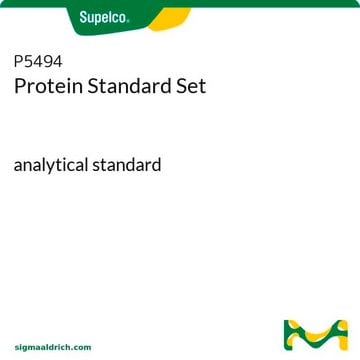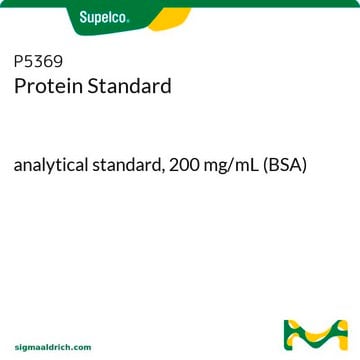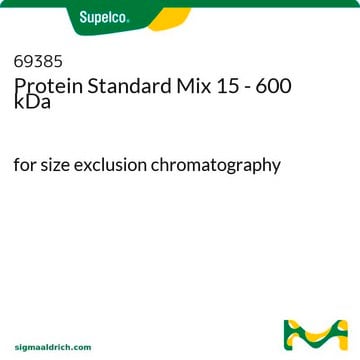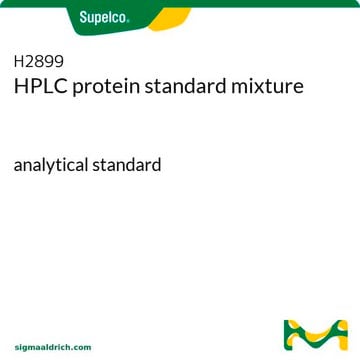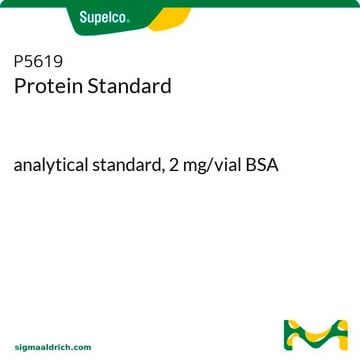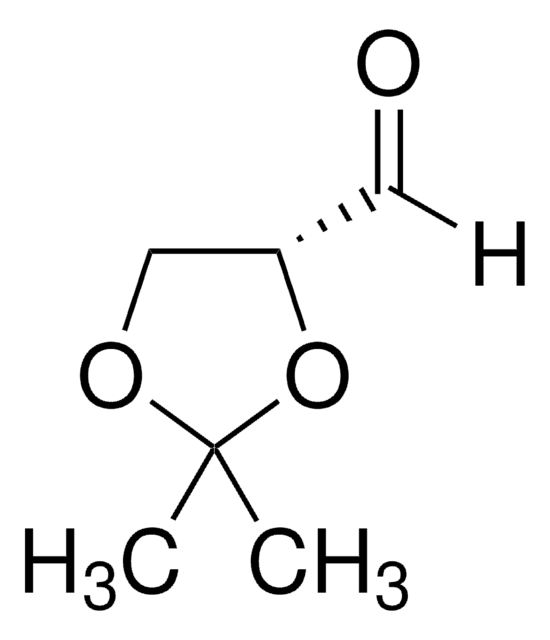P8994
Protein Standard, 80 mg/ml BSA
analytical standard
Faça loginpara ver os preços organizacionais e de contrato
About This Item
Código UNSPSC:
85151701
Produtos recomendados
grau
analytical standard
Nível de qualidade
classe(s) química(is) do analito
amino acids, peptides, proteins
técnica(s)
gel permeation chromatography (GPC): suitable
aplicação(ões)
food and beverages
formato
neat
temperatura de armazenamento
2-8°C
Código de classe de armazenamento
12 - Non Combustible Liquids
Classe de risco de água (WGK)
WGK 2
Ponto de fulgor (°F)
Not applicable
Ponto de fulgor (°C)
Not applicable
Choose from one of the most recent versions:
Certificados de análise (COA)
Lot/Batch Number
Don't see the Right Version?
If you require a particular version, you can look up a specific certificate by the Lot or Batch number.
Já possui este produto?
Encontre a documentação dos produtos que você adquiriu recentemente na biblioteca de documentos.
Ganary Dabiri et al.
The Journal of investigative dermatology, 128(10), 2518-2525 (2008-04-11)
Following severe traumatic or thermal injury to the dermis, hypertrophic scars (HTSs) often develop in humans. These scar fibroblasts (hypertrophic scar fibroblasts (HTSFs)) retain the myofibroblast phenotype persistently, rather than transiently as in acute wounds. These pathogenic myofibroblasts constitutively express
Guowu Hu et al.
The Journal of clinical investigation, 118(3), 1186-1197 (2008-02-09)
Autophagy is a process by which cells recycle cytoplasm and defective organelles during stress situations such as nutrient starvation. It can also be used by host cells as an immune defense mechanism to eliminate infectious pathogens. Here we describe the
Nabanita De et al.
PLoS biology, 6(3), e67-e67 (2008-03-28)
Environmental signals that trigger bacterial pathogenesis and biofilm formation are mediated by changes in the level of cyclic dimeric guanosine monophosphate (c-di-GMP), a unique eubacterial second messenger. Tight regulation of cellular c-di-GMP concentration is governed by diguanylate cyclases and phosphodiesterases
Umut Gazi et al.
The Journal of biological chemistry, 286(10), 7822-7829 (2011-01-06)
The mannose receptor (MR) is an endocytic type I membrane molecule with a broad ligand specificity that is involved in both hemostasis and pathogen recognition. Membrane-anchored MR is cleaved by a metalloproteinase into functional soluble MR (sMR) composed of the
Nossa equipe de cientistas tem experiência em todas as áreas de pesquisa, incluindo Life Sciences, ciência de materiais, síntese química, cromatografia, química analítica e muitas outras.
Entre em contato com a assistência técnica